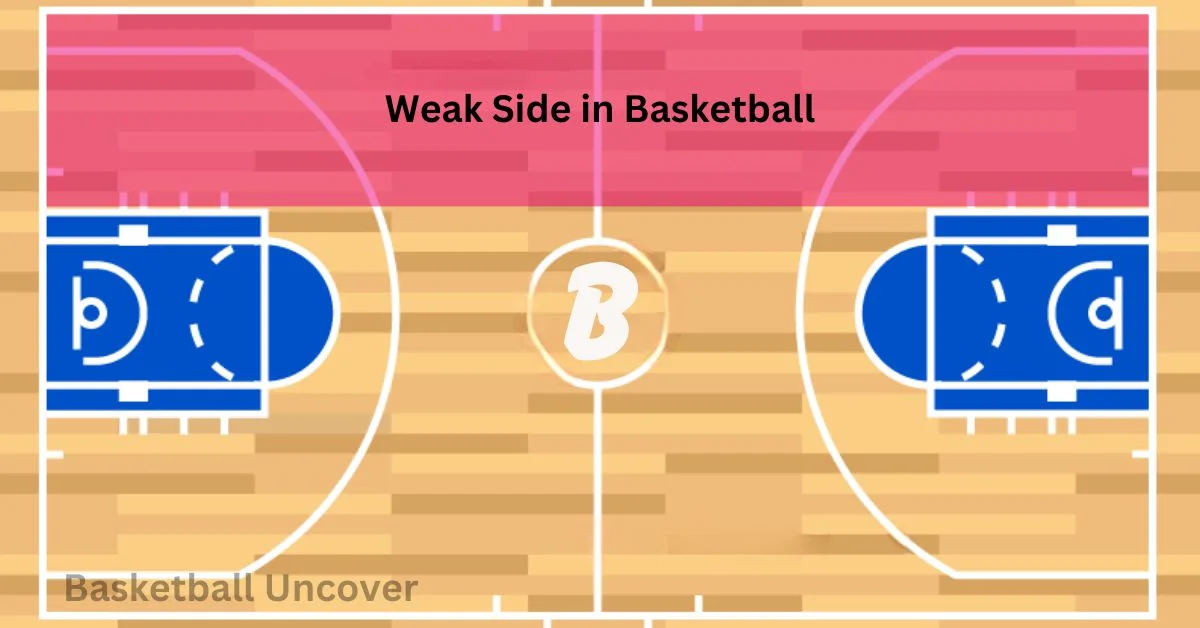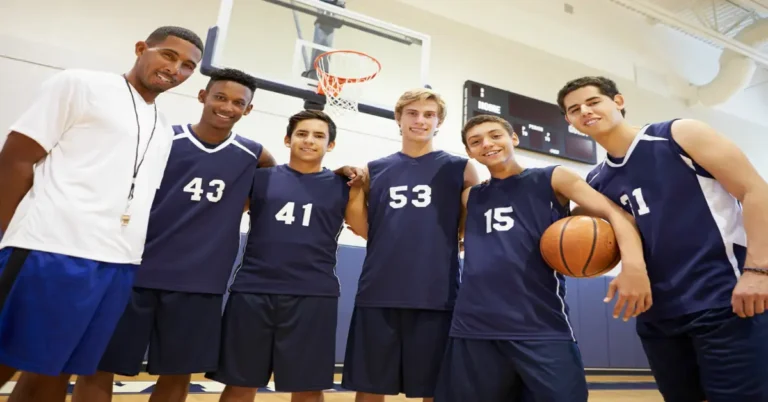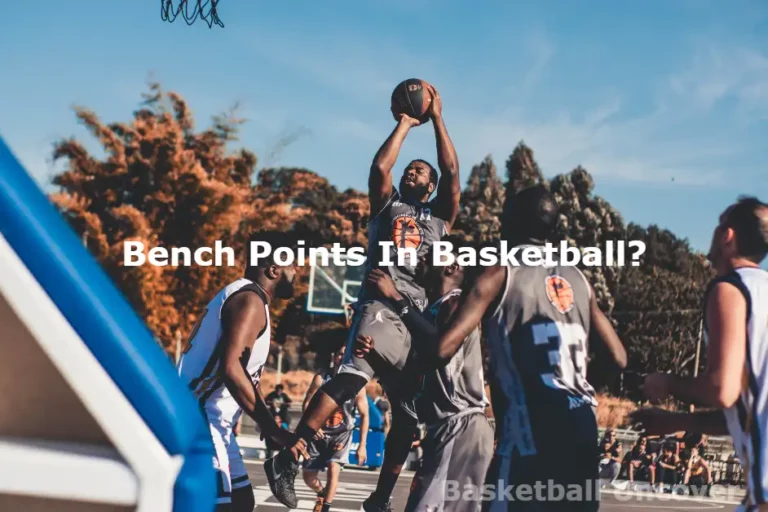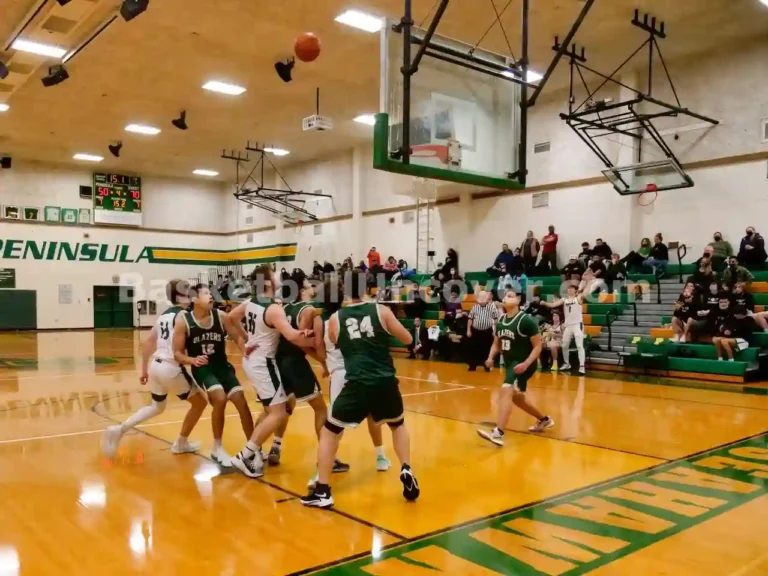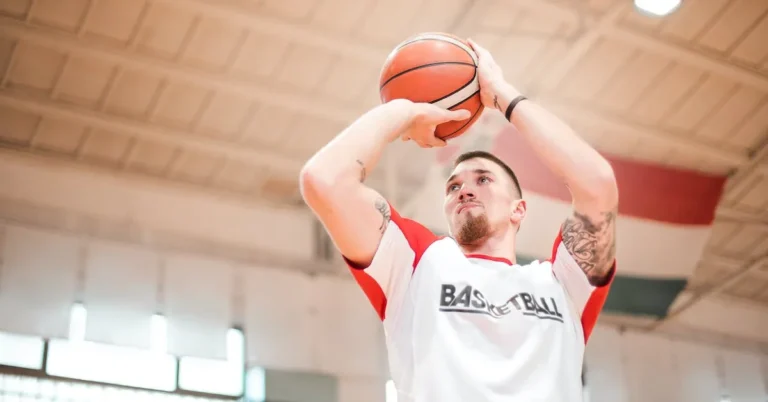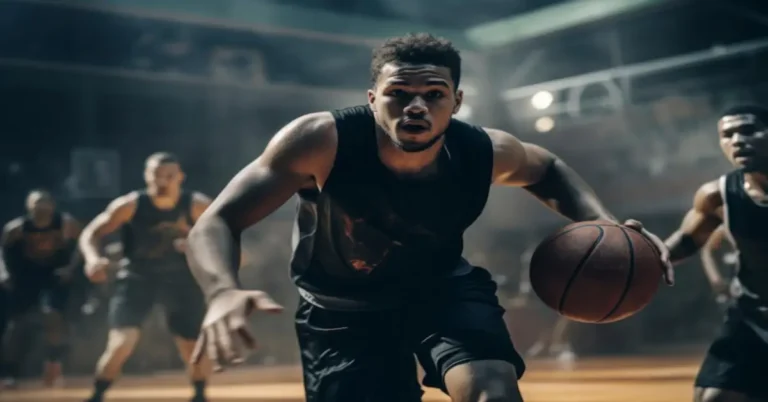What Is The Weak Side In Basketball
The weak side in basketball, When a team has the ball on one side of the court, the players on the opposite side are considered to be on the weak side.
Understanding and effectively utilizing the weak side is crucial for creating spacing, facilitating ball movement, and exploiting defensive vulnerabilities.
The weaker side on the basketball court is both the left or right side, depending on the ball’s position.
Example of weak sides in basketball
Imagine a basketball team setting up an offensive play. The point guard has the ball on the right side of the court, and the shooting guard, small forward, and power forward are positioned on the strong side (the right side in this case) to create an offensive threat. Meanwhile, the center positions themselves on the weak side, away from the ball.
As the play unfolds, the defense focuses on the strong side where the ball is. The center on the weak side becomes a key player as they can take advantage of the defensive attention being on the opposite side. They may move strategically to receive a pass, set a screen, or even go for an offensive rebound if a shot is taken.
This movement on the weak side not only creates additional scoring opportunities but also helps maintain good court spacing, making it harder for the defense to cover all areas effectively.
In this scenario, the weak side plays a crucial role in the team’s overall offensive strategy, demonstrating how effective use of both strong and weak sides can lead to a well-coordinated and successful basketball play.
What are common offensive actions against the weak side In basketball?
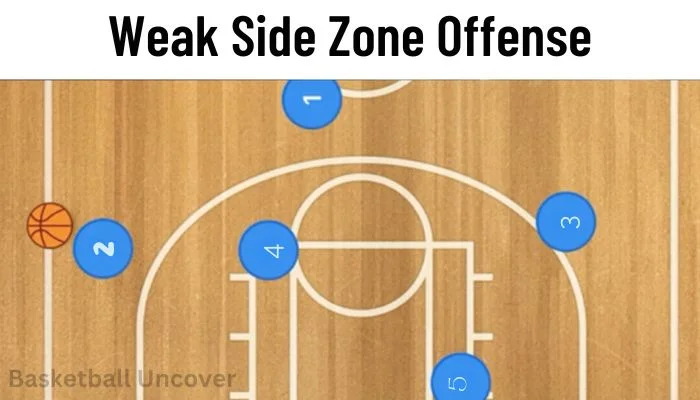
The weak side in basketball, the half of the court without the ball, can be a goldmine for smart offenses. Here are some everyday offensive actions against it:
Cuts:
- Backdoor cut: A player quickly sprints toward the hoop while the defense’s attention is focused on the ball.
- Baseline cut: A slash from the corner or wing towards the basket, often against a slow-rotating defender.
- Flex cut: A player sets a screen for the ball handler, then cuts to the open basket if the screener’s defender helps on the ball.
- Curl cut: A player with their back to the basket cuts behind their defender toward the corner.
Screens:
- Flare screen: A player sets a quick screen for a weak-side shooter, disrupting the defender’s closeout.
- Stagger screen: Two players set screens for each other in quick succession, confusing defenders and potentially freeing up a cutter or shooter.
- Dribble handoff: A player without the ball receives a handoff from the ball handler and drives to the basket or shoots.
Spacing and Ball Movement:
- Swingball: Pass the ball across the weak side to find an open shooter or cutter.
- Reversal: If the ball side action gets clogged, reverse the pass to the weak side where defenders might be scrambling.
- Space the floor: Keep weak-side players evenly spaced to make it harder for defenders to help and contest shots.
Other Tactics:
- Post-ups: Utilize a mismatch on the weak side by sending a strong post player against a smaller defender.
- Isolation: If a weak-side player has a hot hand, clear their space for an isolation drive or shot.
- Back cuts: A player cuts behind their defender when they switch onto another offensive player.
Remember, the most effective weak-side actions are those that keep the defense guessing and react quickly to create open looks or scoring opportunities.
Read More: What is DTD in Basketball
Effective weak-side defense in basketball
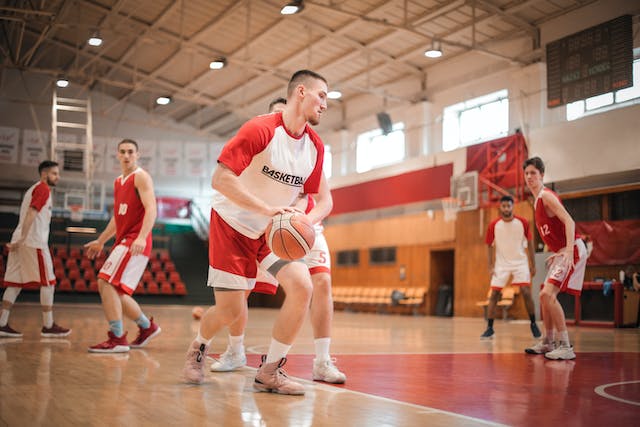
To prevent easy scoring opportunities for the opposing team. The weak side refers to the side of the court away from the ball. Here are some tactics to improve weak-side defense:
Communication:
Ensure constant communication between players on the weak side. This helps in identifying potential threats and coordinating defensive rotations.
Awareness:
Players on the weak side should be aware of both their immediate opponent and the ball. This helps in making quick decisions on when to help, rotate, or stay with their assigned player.
Proper positioning:
Maintain proper defensive positioning. Players on the weak side should be in a stance that allows them to react to the ball’s movement quickly. This includes being on the balls of their feet, knees bent, and hands active.
Help defense:
Be ready to provide help defense when necessary. If a teammate gets beaten on the strong side, players on the weak side should be prepared to step in and challenge the shot or discourage a drive to the basket.
Closeouts:
Close out on shooters under control. Rushing out to contest a shot can lead to an easy blow-by, so closing out with controlled steps is essential to defend against both shots and drives.
Anticipate passes:
Read the eyes of the ball handler and anticipate passes. Quick and accurate reads can lead to interceptions or deflections, disrupting the offensive flow.
Rotate and recover:
If the ball is swung to the weak side, players must rotate to cover potential threats while maintaining an understanding of their primary defensive responsibilities.
Box out and secure rebounds:
Weak-side players need to box out their opponents and secure rebounds after a shot attempt. This prevents second-chance opportunities for the offense.
Quick decision-making:
Train players to make quick decisions on whether to stay with their assigned player, help in the paint, or close out on a shooter. Delayed reactions can lead to open shots for the opposition.
Practice scenarios:
Simulate various game situations during practice to reinforce the principles of weak-side defense. This can include 3v3 or 4v4 drills with a focus on defensive rotations.
Mastering the weak side in basketball
Mastering the weak side in basketball is crucial for a well-rounded offensive strategy and effective team play.
The weak side refers to the side of the court opposite to where the ball is located. Here are key strategies to enhance your team’s performance on the weak side:
Spacing and Movement:
Ensure proper spacing among players on the weak side to stretch the defense.
Encourage constant movement to keep defenders on their toes and create open passing lanes.
Off-Ball Screens:
Use off-ball screens on the weak side to free up shooters or cutters for open opportunities.
Players without the ball should set screens for teammates to create mismatches or open looks.
Communication:
Emphasize the importance of communication to keep players on the weak side informed about the ball movement and potential scoring opportunities.
Develop a set of hand signals or verbal cues to convey plays and defensive adjustments quickly.
Reversal of the Ball:
Teach players to swing the ball quickly from the strong side to the weak side to exploit defensive shifts.
This can force defenders to close out quickly, creating opportunities for open shots or driving lanes.
Penetration and Kick:
Encourage players on the weak side to be ready for kick-out passes when a teammate penetrates the defense.
Develop the skill of catching and shooting or making quick decisions, such as driving to the basket or passing to an open teammate.
Weak Side Rebounding:
Stress the importance of weak side rebounding to gain extra possessions.
Players on the weak side should be active in crashing the boards and securing offensive rebounds.
Weak Side Cuts:
Implement plays that involve weak side cuts, where players move towards the basket for high-percentage shots.
Utilize backdoor cuts or baseline cuts to catch the defense off guard.
Screen and Roll:
Use pick-and-roll actions on the weak side to create scoring opportunities.
The player setting the screen can either roll to the basket or pop out for an open shot.
Patience and Ball Movement:
Emphasize patience in offensive sets, encouraging players to wait for the right moment to attack from the weak side.
Quick and precise ball movement can lead to open shots and defensive breakdowns.
Scouting and Adjustments:
Study opponents to identify weaknesses in their defensive schemes.
Make in-game adjustments based on how the defense reacts to plays on the weak side.
By focusing on these strategies, a team can become more versatile and unpredictable, making it challenging for opponents to defend effectively. Teamwork, communication, and smart decision-making on the weak side are crucial elements for success in basketball.
FAQs
The weak side is the side of the court opposite the ball.
In basketball, “side” can refer to a few different things depending on the context:
Strong side: The half of the court where the ball is currently located, along with players from both teams involved in the immediate action.
Weak side: The opposite half of the court, which may have fewer players actively involved in the immediate play.
Baseline: The short lines at either end of the court beneath the basket.
Sideline: The long boundaries of the court on either side.
The short corner in basketball is the area between the corner and the basket, about 12 feet from the basket. It’s often used as a target for passing and cutting in offensive strategies, especially against zone defenses.
Help side defense in basketball is a defensive tactic where off-ball defenders rotate and support the on-ball defender to prevent scoring opportunities, also known as the Help defense.
Conclusion
In conclusion, the weak side is not just a forgotten corner of the basketball court. It’s a strategic powerhouse waiting to be unleashed. Teams that understand and leverage the potential of the weak side have a distinct advantage, turning seemingly ordinary plays into extraordinary victories.

